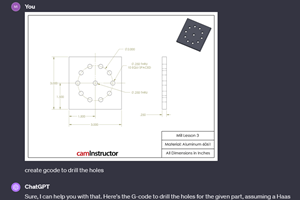How PLM Helps Manage Global Supply Chains
Product Lifecycle Management (PLM) can make it possible to capture information from all stages of manufacturing and production. Here are a few examples of how PLM can help optimize production processes that are spread around the world.
Share





Manufacturers hoping to improve the efficiency of their globally dispersed production processes are presented with a number of challenges. For instance, it is difficult to balance production lines and optimize use of global assets when there is a wide variation in plant capabilities. Such variability also makes it difficult to coordinate multiple subassemblies with the schedule of the main assembly so that parts and assemblies arrive at the right stage of production at the correct time.
Another hurdle to overcome with a global supply chain is a lack of communication between design and manufacturing. This disconnect not only makes it difficult to plan for product variation, but it hinders designers from incorporating production and assembly experience into new designs to improve manufacturability.
Product Lifecycle Management (PLM) is an enterprise, business and information strategy that enables companies to establish global information networks to meet these challenges. By providing a digital manufacturing environment with a centralized data repository, PLM can make it possible to capture information from all stages of manufacturing and production. This includes product engineering; product release management; assembly process planning; process simulation and validation; process detailing and documentation; and product launch support.
Frans Adamowicz is the director of Global Industry Solutions for Machinery for Siemens PLM Software (Plano, Texas). Mr. Adamowicz offers a few examples of how fundamental PLM strategies can help companies optimize production processes that are spread around the world.
1) Integrate design and manufacturing data to eliminate the “design change penalty.” Most companies use a mix of specialized software applications to manage design and manufacturing processes. Although these solutions are useful, they can isolate valuable data. This problem becomes more pronounced when using global suppliers, especially when product design changes are made.
Companies working in a digital manufacturing environment can view graphical representations of production and assembly processes to quickly accommodate design changes. When this digital manufacturing environment is supported by PLM, a design change can automatically update manufacturing process data no matter where the work is being performed, minimizing the negative effect on a global production processes.
2) Simulate global operations in a virtual environment. It is typically unfeasible to test a production process on the factory floor. A digital manufacturing environment with a centralized data repository (provided by PLM) makes it possible to capture information from all stages of the manufacturing and production process from design through to product launch support. Uniting the entire global process into one coordinated team permits computer simulations to balance production lines and to anticipate and alleviate production bottlenecks. In addition, computer simulations can uncover potential supply chain problems.
3) Make the important data easy to find and access. Although the information a company needs to improve production efficiency often already exists, it may be difficult to quickly or easily locate or access it. An open digital environment with a central repository containing both design and manufacturing data allows companies to build production efficiency into product designs, analyze manufacturability in current and planned facilities and establish continuous improvement cycles built on manufacturing experience. It is often beneficial to provide the information in an easily accessible, “lightweight” format, such as the JT common data format.
The JT data format serves as a common 3D language for enabling product visualization and information sharing among PLM software applications. The functional, lightweight nature of JT makes it possible to view and share product data, manufacturing information and interactive images in real-time throughout all phases of the product lifecycle.—DRK
Related Content
The Power of Practical Demonstrations and Projects
Practical work has served Bridgerland Technical College both in preparing its current students for manufacturing jobs and in appealing to new generations of potential machinists.
Read MoreCan ChatGPT Create Usable G-Code Programs?
Since its debut in late 2022, ChatGPT has been used in many situations, from writing stories to writing code, including G-code. But is it useful to shops? We asked a CAM expert for his thoughts.
Read MoreCan AI Replace Programmers? Writers Face a Similar Question
The answer is the same in both cases. Artificial intelligence performs sophisticated tasks, but falls short of delivering on the fullness of what the work entails.
Read MoreOrthopedic Event Discusses Manufacturing Strategies
At the seminar, representatives from multiple companies discussed strategies for making orthopedic devices accurately and efficiently.
Read MoreRead Next
AMRs Are Moving Into Manufacturing: 4 Considerations for Implementation
AMRs can provide a flexible, easy-to-use automation platform so long as manufacturers choose a suitable task and prepare their facilities.
Read MoreMachine Shop MBA
Making Chips and 91ÊÓƵÍøÕ¾ÎÛ are teaming up for a new podcast series called Machine Shop MBA—designed to help manufacturers measure their success against the industry’s best. Through the lens of the Top Shops benchmarking program, the series explores the KPIs that set high-performing shops apart, from machine utilization and first-pass yield to employee engagement and revenue per employee.
Read More






















